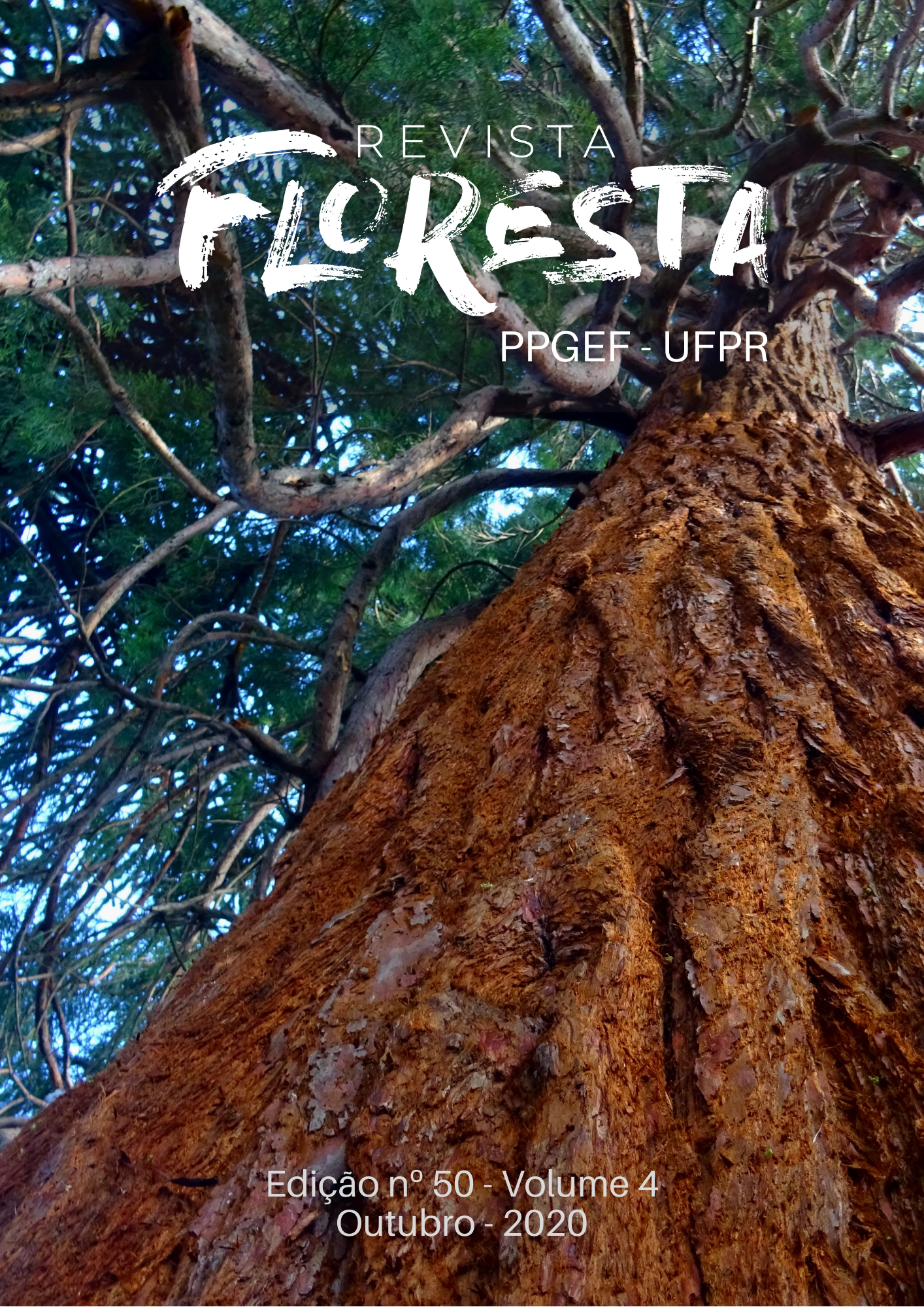CANOPY ARCHITECTURE AND MORPHOMETRY OF TREE SPECIES USED IN THE URBAN FOREST
DOI:
https://doi.org/10.5380/rf.v50i4.66995Palavras-chave:
Hallé's model, growth pattern, canopy shape, morphometric indexesResumo
Urban forest planning is necessary to avoid problems coming from the introduction of trees into urban spaces. Within the planning process, how space can be occupied on sidewalks is an important item to indicate which species can be planted according to the canopy characteristics . The objective of this study was to analyze morphometric indexes, to classify the growth pattern and to determine the canopy architecture of ten species planted in the urban forest of the cities Curitiba and Pinhais, Paraná, under conditions of free growth, without competition. The sampled species were characterized by the variables diameter at breast height, total height and canopy height and canopy radius in the north, south, east and west directions, which helped to characterize the morphometry of the species. The canopy architecture was classified according to structural models A 60% of crown ratio. Libidibia ferrea and Koelreuteria paniculata presented the greatest amplitude regarding the canopy form, between vertical elliptic, round and horizontal elliptic. Half of the species were fit in the canopy architecture model of the Koriba type, two in the Troll model and one in each of the D'Attim, Leeuwenberg and Mangenot types.
Downloads
Publicado
Como Citar
Edição
Seção
Licença
Direitos Autorais para artigos publicados nesta revista são do autor, com direitos de primeira publicação para a revista. Em virtude da aparecerem nesta revista de acesso público, os artigos são de uso gratuito, com atribuições próprias, em aplicações educacionais e não-comerciais.A revista, seguindo a recomendações do movimento Acesso Aberto, proporciona acesso publico a todo o seu conteudo, seguindo o principio de que tornar gratuito o acesso a pesquisas gera um maior intrcambio global de conhecimento.
Conteúdos do periódico licenciados sob uma CC BY-NC-SA 4.0



